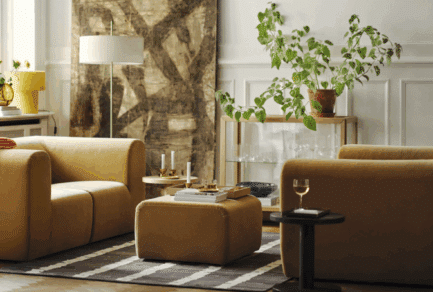Beijing, China, August 27, 2025 – With the Qixi Festival approaching, also known as Chinese Valentine’s Day, JD Flowers, the floral arm of JD.com, is expanding its direct sourcing of premium Ecuadorian roses, cementing its position as China’s leading importer and distributor of these exquisite blooms. Leveraging its advanced supply chain and logistics expertise, JD Flowers delivers vibrant roses from Ecuador’s lush fields to Chinese consumers in as fast as 72 hours -at competitive prices – meeting the rising demand for high-quality flowers.
Renowned for their long stems, vivid colors, and exceptional durability, Ecuadorian roses thrive in the country’s unique high-altitude climate and abundant sunlight. Ms. Maria Soledad Cordova, Ecuador’s Ambassador to China, underscored the partnership’s significance at JD Flowers’ global strategy launch event in Beijing: “The arrival of Ecuadorian roses in China opens a new chapter in our agricultural trade. This is only the beginning, as more Chinese consumers will embrace the radiant beauty of our flowers, enriching their traditions and cherished moments. This collaboration strengthens bilateral ties and brings Ecuador’s floral excellence to China’s vibrant celebrations.”

Maria Soledad Córdova, Ambassador of Ecuador to China, spoke at JD Flowers’ global strategy launch event
As part of a strategic upgrade announced during the event, JD Flowers aims to sell over 100 million flowers by 2025 through its exclusive sales partnerships. The plan includes sourcing 50 million imported blooms, such as Ecuadorian roses, Dutch tulips, Japanese bellflowers, and Colombian hydrangeas. This initiative is in response to China’s expanding flower retail market, which is projected to grow at a 7% annual rate, surpassing RMB 250 billion yuan by 2025.
Direct-from-Farm: 30% Savings for Greater Access
JD Flowers has further solidified its role as China’s largest importer and distributor of Ecuadorian roses through its innovative direct sourcing model. Expert buyers, stationed in Ecuador’s premier rose-growing regions, partner with top-tier farms like Ceres Farms, a leading plantation with extensive experience in China. This streamlined approach reduces time to market, boosts export efficiency, and lowers costs, making premium roses accessible to Chinese consumers seeking quality and elegance.

JD Flowers’ direct-sourcing floral base in Ecuador
“Partnering with JD Flowers is an exciting expansion and has opened a highly efficient sales channel into China’s vibrant market,” said Elizabeth Sarango, Sales Director at Ceres Farms. “Through innovative initiatives like harvest ceremonies, we proudly showcase the rich diversity and authentic beauty of Ecuadorian roses, fueling substantial market growth.”
Since the China-Ecuador Free Trade Agreement came into effect in 2024 eliminating import tariffs, JD Flowers has leveraged JD’s expert procurement and marketing strategies to successfully reduce the retail price of Ecuadorian roses by approximately 30%. This significant reduction transforms what was a luxury item into an accessible, everyday delight for consumers across China.
Exclusive Air Route Delivers Freshness in 72 Hours
To preserve the pristine quality of Ecuadorian roses, JD Flowers has partnered with Emirates Airlines to create a dedicated “Ecuadorian Rose Supply Route”, reducing transit time to 40 hours with two stopovers. To ensure roses arrive at peak freshness, a sophisticated three-stage temperature control process is used, which includes pre-cooling at 4°C, constant 2-8°C transport, patented moisture-retention packaging, and an expedited 1.5-hour customs clearance under the free trade agreement.

JD Flowers imported Ecuadorian roses distributed nationwide from Shanghai airport before Qixi Festival
Jensen Liu, head of JD Flowers, highlighted that JD’s real-time supply chain insights enable large-scale procurement and ensure a stable global supply through direct sourcing. “We optimize the imported flower delivery process, which traditionally involves multiple steps such as flower markets, wholesalers, and distributors. Our direct-sourcing partnership reduces the cross-border delivery time from seven to ten days to as little as 3 days, enabling us to deliver top-quality flowers worldwide to consumers quickly.”
For the upcoming Qixi Festival on August 29, JD Flowers is launching four exclusive rose products: a unique 1.5-meter, 999-rose bouquet for auction; dyed varieties in wine-red and galaxy tones; a classical red bouquet; and an elegant mini-bouquet, to cater to different customer preferences.
Global Premium Flowers Ecosystem Alliance with Exceptional Service
JD Flowers’ instant retail network spans over 350 cities and 200,000 stores across China, offering flower delivery in as little as one hour, with on-demand delivery possible in just nine minutes. Enhanced by social media gifting features and a damage compensation guarantee, JD Flowers delivers a seamless and delightful shopping experience, ideal for Qixi surprises and everyday celebrations.
During the strategy launch event, JD Flowers also unveiled its Global Premium Flowers Ecosystem Alliance. This initiative involves close collaboration with leading floral brands from countries including Ecuador, Colombia, the Netherlands, South Africa, Japan, Thailand, and others, promoting a more integrated and worldwide growth of the floral industry through joint efforts.

Representatives from the Ecuadorian Embassy in China and JD.com at JD Flowers’ global strategy launch event
With its proven expertise in supply chain innovation and market penetration, JD.com offers international partners unparalleled access to its more than 600 million consumers. By delivering quality, affordability, and outstanding service, JD Flowers is elevating the flower shopping experience for customers and invites partners to join in unlocking the immense potential of China’s dynamic market, promising blossoming opportunities ahead.
(vivian.yang@jd.com)









 With Universal Studios Set to Open in Beijing, Search Volume Surges on JD
With Universal Studios Set to Open in Beijing, Search Volume Surges on JD



